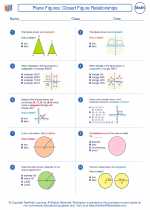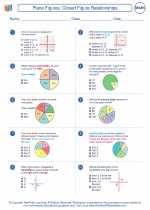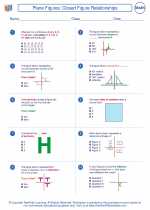Matrix Method Study Guide
What is a Matrix?
A matrix is a rectangular array of numbers, symbols, or expressions arranged in rows and columns. It is commonly used in mathematics to organize and manipulate data.
Matrix Notation
A matrix is usually denoted by a capital letter, such as A, and its elements are represented using subscripts. For example, Aij refers to the element in the i-th row and j-th column of matrix A.
Matrix Operations
There are several operations that can be performed on matrices, including addition, subtraction, scalar multiplication, and matrix multiplication.
Addition and Subtraction:
To add or subtract two matrices, they must have the same dimensions (same number of rows and columns). The corresponding elements are added or subtracted to form the resulting matrix.
Scalar Multiplication:
Multiplying a matrix by a scalar (a single number) involves multiplying each element of the matrix by the scalar.
Matrix Multiplication:
Matrix multiplication is a bit more complex. To multiply two matrices A and B, the number of columns in A must be equal to the number of rows in B. The resulting matrix will have the same number of rows as A and the same number of columns as B.
Matrix Method in Solving Systems of Equations
The matrix method can be used to solve systems of linear equations. The system of equations can be represented in matrix form as AX = B, where A is the coefficient matrix, X is the matrix of variables, and B is the matrix of constants. The solution can be obtained by performing matrix operations to isolate the variable matrix X.
Applications of Matrix Method
Matrix method has various applications in diverse fields such as physics, computer graphics, economics, and engineering. It is used for solving complex systems of equations, analyzing transformations, and representing data in a structured form.
Practice Problems
1. Perform the following matrix operations:
- Matrix A = [1 2 3] , Matrix B = [4 5 6]
- Matrix C = [2 4 6] , Matrix D = [1 3 5]
2. Solve the system of equations using the matrix method:
- 2x + 3y = 8
- 4x - y = 6
Conclusion
The matrix method is a powerful tool in mathematics and has wide-ranging applications. Understanding matrix operations and their applications can be beneficial for solving complex problems and analyzing data in various fields.
.◂Math Worksheets and Study Guides Seventh Grade. Plane Figures: Closed Figure Relationships

 Worksheet/Answer key
Worksheet/Answer key
 Worksheet/Answer key
Worksheet/Answer key
 Worksheet/Answer key
Worksheet/Answer key
